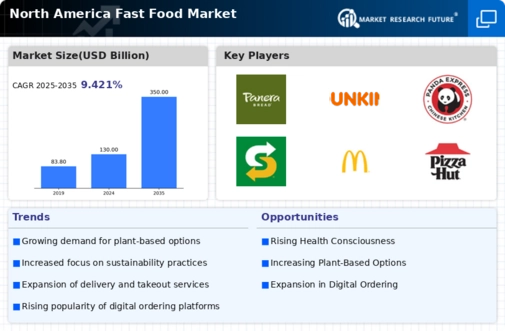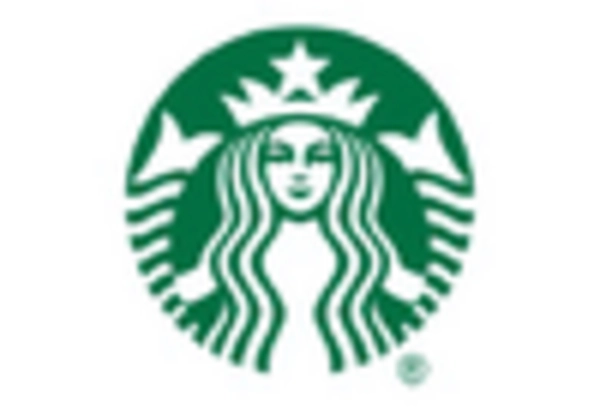Diverse Menu Offerings
The fast food market in North America is characterized by an expanding array of menu offerings that cater to diverse consumer preferences. This includes the introduction of plant-based options, ethnic cuisines, and customizable meals. In recent years, the market has seen a notable increase in vegetarian and vegan items, with sales of plant-based products growing by over 20% annually. The fast food market recognizes the importance of appealing to health-conscious consumers while also satisfying traditional tastes. This diversification not only attracts a broader customer base but also enhances brand loyalty. As consumer tastes evolve, the fast food market is likely to continue innovating its menu to meet these changing demands.
Convenience and Speed of Service
The fast food market in North America thrives on the demand for convenience and speed of service. Consumers increasingly seek quick meal options that fit into their busy lifestyles. This trend is reflected in the growing number of drive-thru locations and mobile ordering capabilities. In 2025, approximately 70% of fast food sales in the region are attributed to drive-thru services, highlighting the importance of efficiency in this industry. The fast food market adapts by streamlining operations and enhancing service speed, which is crucial for attracting time-sensitive customers. As urbanization continues to rise, the need for quick dining solutions is likely to increase, further driving the growth of the fast food market.
Cultural Shifts and Dining Preferences
Cultural shifts in dining preferences are reshaping the fast food market in North America. There is a growing inclination towards casual dining experiences and social eating, which influences how fast food brands position themselves. The fast food market is responding by creating more inviting atmospheres and enhancing the overall dining experience. In 2025, it is anticipated that nearly 30% of consumers prefer fast food establishments that offer a comfortable dining environment. This shift suggests that fast food is no longer solely about convenience but also about the experience. As cultural trends continue to evolve, the fast food market may need to adapt its strategies to align with these changing consumer expectations.
Economic Factors and Consumer Spending
Economic factors significantly influence the fast food market in North America. Fluctuations in disposable income and employment rates directly impact consumer spending habits. In 2025, the fast food market is projected to grow by approximately 5% as consumers increasingly opt for affordable dining options amid economic uncertainties. The affordability and value proposition of fast food appeal to a wide demographic, particularly during times of economic strain. Additionally, promotional offers and value meals are likely to attract budget-conscious consumers, further driving sales. As economic conditions evolve, the fast food market must remain agile to adapt to changing consumer spending patterns.
Technological Advancements in Ordering
Technological advancements play a pivotal role in shaping the fast food market in North America. The integration of mobile apps, self-service kiosks, and AI-driven customer service is transforming the way consumers interact with fast food brands. In 2025, it is estimated that over 40% of fast food orders are placed through digital platforms, indicating a significant shift towards technology-driven solutions. The fast food market leverages these innovations to enhance customer experience and streamline operations. As technology continues to evolve, the potential for further integration of advanced ordering systems may reshape consumer expectations and operational efficiencies in the fast food sector.


















Leave a Comment